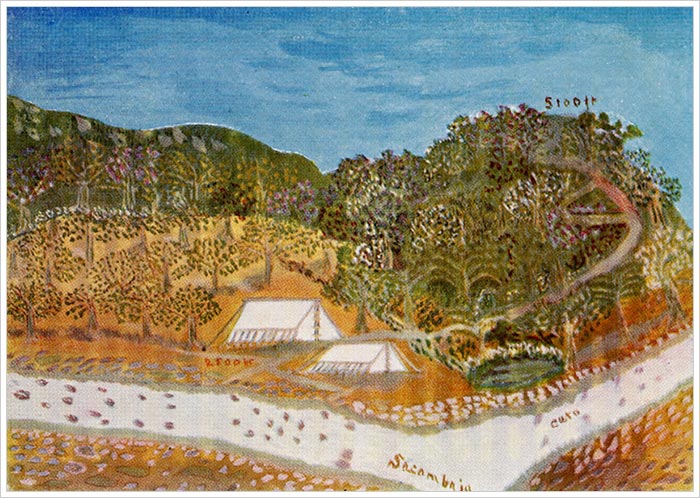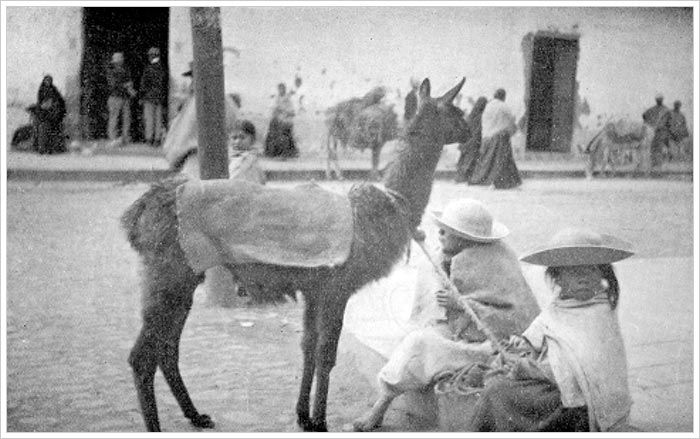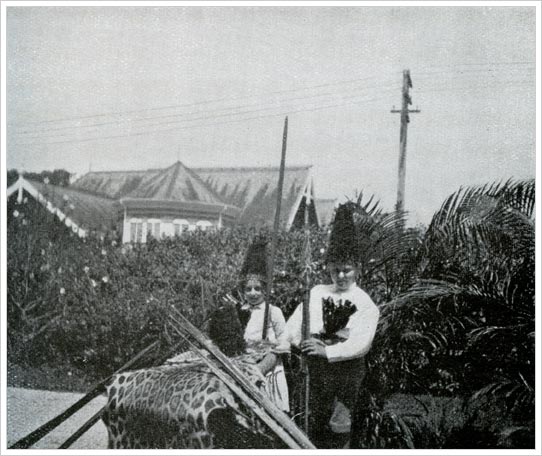The Second Attempt, Part 2
One night two men, on their way to La Paz, camped down near the convent, with five mules loaded with coca leaves. During the night one of the mules strayed away, and, in the morning, one of the men left to look for him. His companion remained with the other mules, and, while there, began to uncover one of the numerous tapadas near the north bank of the river. Two days afterwards the other man turned up with the lost mule. They said that as the mules and cargo belonged to them they would stop and finish uncovering the mound of earth and stones, which they did in eight days. The day after they had left, which was Sunday, I rode over on my mule to their camp, about a mile and a half away; and found all the cargo left, and covered over, so that it was clear they had been successful in their search. Some weeks afterwards I heard that they had found the hole full of old silver plate, which I understood they sold for £1,500.
Some days afterwards Manuel arrived with the stores, also Mendizabal, who joined him at Cuti. He told me that when he heard strange Indians had come down to work for me he felt very uneasy, as he did not know them. His wife was also alarmed, and begged him to tell me to be careful not to take anyone who was not sent with a note from him. He also said that three days before, one of the Indian girls on his place had come and told his wife that they had heard that strange Indians had gone down there, and that they were up to no good. She sent me a letter by her husband, begging me to return to the house with him. To my regret, Mendizabal said that though he would have liked to have stayed for a few days he did not dare, for fear of ague. I told him that the weather was the same, beautiful sunshine all day, and very cold at night. I promised him to be careful about the Indians, and wrote to his wife, thanking her for the interest she was taking in me. He then went back with Manuel, who was to leave the mules and horses at Cuti with Mendizabal’s animals, and return to do the camp work and cooking.
The following day I saw José Maria from the top of the hill, crossing the river, and at 2 p.m. he turned up with the usual weekly sheep. He told me Manuel was at his house with a bad attack of malaria, and would come on when he was better.
The four strange Indians had now been with me nearly three weeks; they all worked well, and there was no trouble, and nothing amiss to my knowledge. One morning a few days after Mendizabal left, I went round as usual, after I had got up, to the kitchen fire, which always burned night and day, and was never allowed to go out. To my surprise I found nobody there, and the fire nearly out. All their clothes had gone too! After breakfast, on looking round, I discovered all their food of the night before in the bush about fifty yards off. About two hours after this, I began to feel very queer, and soon my right leg went numb, and then my arm. I at once looked up the symptoms in Doctor Andrew Wilson’s Symptoms and Treatment of Poisons which I had with me, and soon discovered that I was poisoned. This lecture went on to say, “When your finger nails become blue, you must make yourself vomit quickly for the time is short.” My finger nails were now turning that colour, so I promptly took some hot tea with salt, which fortunately had the desired effect. The feeling came back to my leg and arm, and I felt all right again. This went on several times a day for eight days, and then every three or four days for two months or more; later these attacks would only come on every fortnight or so, and I did not get properly well for a year or more. When I got to La Paz in November, the doctor said I had had enough poison in me to kill twenty men, and the prompt measure I took every time the attacks came on had saved me. At La Paz they gave me strychnine, which made me worse instead of better, and sometimes I was very ill. In England the treatment was altered to arsenic, and I at once began to pick up. Nobody knew what the poison was, but all were convinced it was poison, and not fever. Next year, however, I found out that it was the Aba de San Ignacio, or the Saint Ignatius Bean, which is very much like a Lima bean, and grows on a vine. On the way home in November of that year, I met a fellow passenger, who told me that three years before he had been poisoned in exactly the same way, with the same symptoms as myself, and that some Indians who saw him showed him the bean, and told him it contained strychnine. I found later that this was quite correct; the remedy is arsenic.
The Indians left the camp on July 5th, leaving their last week’s pay behind them; I never saw them again. From the day they left until October 23rd, the start of the first rains, nobody came to the camp, for I had told old José Maria not to bring down any more sheep until I advised him by messenger, as I had nearly a whole bullock hanging up both fresh and dried. During these weeks, I generally pottered round the camp, and now and then went up the hill for a change, when the poison fits would allow me. I shot several doves, which were very tame in the mornings before the sun melted the frost. The temperature twice touched forty degrees below zero, and the average from the beginning of June to the middle of September was twenty-two degrees below zero at 7 a.m., and eighty degrees above at 1 p.m.



